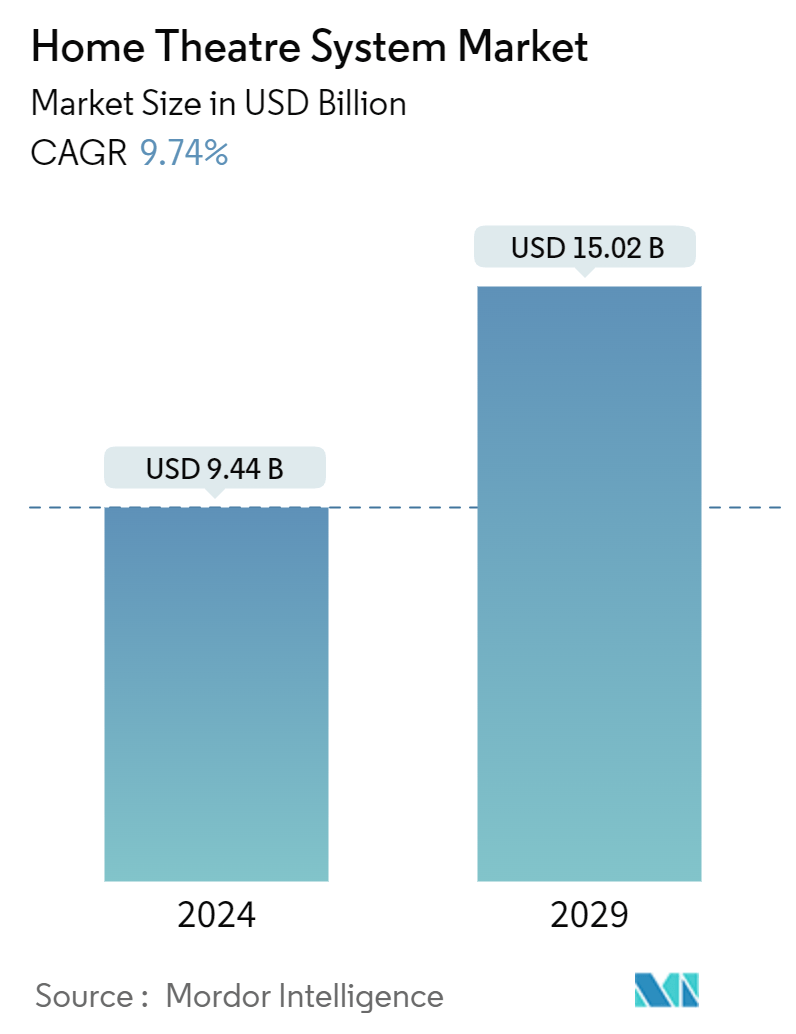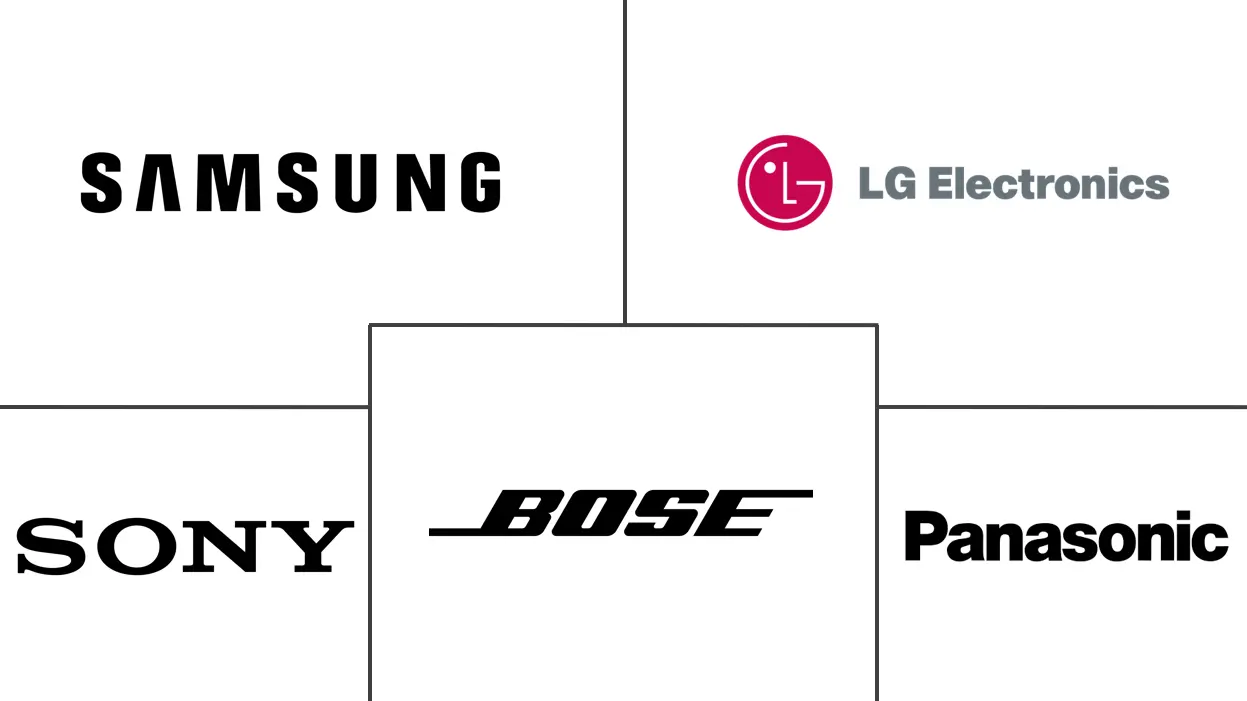Market Size of Home Theatre System Industry

| Study Period | 2019 - 2029 |
| Market Size (2024) | USD 9.44 Billion |
| Market Size (2029) | USD 15.02 Billion |
| CAGR (2024 - 2029) | 9.74 % |
| Fastest Growing Market | Asia Pacific |
| Largest Market | North America |
Major Players
*Disclaimer: Major Players sorted in no particular order |
Home Theatre System Market Analysis
The Home Theatre System Market size is estimated at USD 9.44 billion in 2024, and is expected to reach USD 15.02 billion by 2029, growing at a CAGR of 9.74% during the forecast period (2024-2029).
- Home theatre systems are increasingly becoming integral to smart home ecosystems, enabling users to manage audio and visual components via voice assistants like Amazon Alexa, Google Assistant, and Apple Siri. This shift underscores a larger trend towards interconnected and automated home environments.
- Increasing disposable incomes and urbanization are significantly influencing the market. Economic growth in emerging markets, notably in India and China, bolsters the middle class and fuel demand for entertainment products. Moreover, the widespread availability of affordable options, like EMI plans, allows consumers to buy entertainment products through manageable, incremental payments, further propelling the market's growth.
- As streaming giants like Netflix, Disney+, and Amazon Prime Video continue to rise in prominence, home theatre systems are adapting, ensuring smooth compatibility with these platforms and supporting both high-definition and ultra-high-definition content. A notable example: In May 2024, IMAX officials revealed at the National Association of Broadcasters that select content will debut globally on Disney+, marking it as the inaugural concert film featuring IMAX Enhanced sound powered by DTS.
- Thanks to a collaboration between Disney+, DTS, and IMAX Corporation, DTS:X immersive audio has transitioned from physical discs to the streaming realm. Subscribers of Disney+ with certified IMAX Enhanced devices can now experience DTS:X audio. As the announcement highlights, this technology "delivers the full dynamic range of theatrical content and allows sound to move freely around listeners, enhancing immersion."
- Dolby Atmos and DTS X are some advanced audio technologies that are becoming standard features, offering three-dimensional sounds that enhance the immersive experience. Dolby Atmos, in particular, is being incorporated into more home theatre systems to provide a cinema-like audio experience.
- Consumers are increasingly interested in modular home theatre systems that allow for customization according to room size and acoustic preferences. This trend is driving the popularity of high-end component systems that can be tailored to individual needs. Some modern systems are introducing features that allow users to create personalized audio profiles and presets based on their viewing or listening experience.
- Many challenges exist in the market, such as high costs, complex installation and setup, and challenges related to integration with existing technology. Ensuring compatibility and seamless integration with a variety of existing home entertainment systems and smart home devices can be challenging. Additionally, installing and configuring sophisticated home theatre systems can be complex and require technical expertise. This complexity can deter potential buyers who prefer simpler plug-and-play solutions.
- The increasing inflation rates have increased the cost of goods and services, including home theatre systems. Higher costs lead to reduced purchasing power for consumers and businesses, slowing market growth. Further, the ongoing war between Russia and Ukraine has disrupted the global supply chain, particularly affecting the availability and cost of electronic components and raw materials used in home theatre systems, which may hinder market growth.

